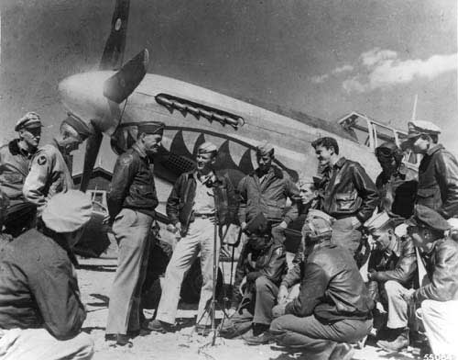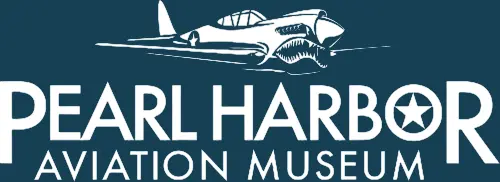Ready Room Blog
5/20/2010
P-40 Warhawks and Claire Chennault’s Flying Tigers
Arriving Tiger at Pearl Harbor This summer, FedEx will deliver a big package to Pearl Harbor Aviation Museum—a World War…
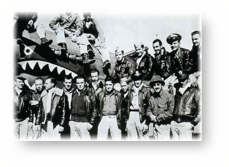
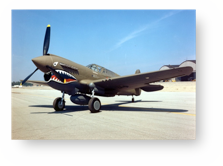
Arriving Tiger at Pearl Harbor
This summer, FedEx will deliver a big package to Pearl Harbor Aviation Museum—a World War II P-40E Warhawk. FedEx inherited the P-40 when it purchased Flying Tiger Airlines. As you might expect, the aircraft is painted in the colors of the Flying Tigers. This new arrival will give docents at Pearl Harbor Aviation Museum the opportunity to talk about the famous Flying Tigers and the often-overlooked China-Burma-India (CBI) theater.
In preparation for the P-40E’s arrival, this Pearl Harbor Blog gives some background on the Flying Tigers and our new aircraft in particular. At the end of this blog, there are some larger-size pictures of P-40s, the Flying Tigers, and Claire Chennault.
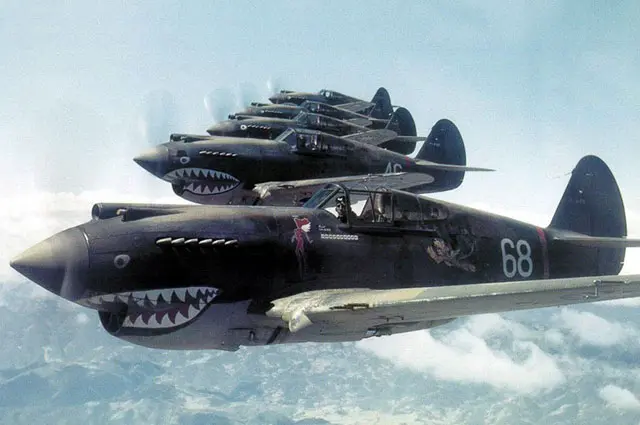
Blood for the Tigers
Pearl Harbor was just the beginning. Just hours after striking Hawaii, Japan decimated MacArthur’s air forces in the Philippines and the British air forces in Malaya. Later that same day, Japan bombed Guam, Wake Island, Singapore, Shanghai, Hong Kong, and several other targets. During the next weeks and months, the Japanese rolled across Asia and the Pacific in an unbroken string of victories. U.S. morale was at rock bottom.
On December 20, 1941, ten KI-43 Japanese bombers approached Kunming, China. With all eastern seaports closed, China could only get supplies through the Burma Road. Kunming was the road’s terminus in China, and it was all too familiar with devastating Japanese air raids.
This time, however, new fighters dove into the Japanese bomber formation. These were P-40B Warhawks, which had fared poorly against Japanese attackers at the beginning of the war. These P-40s, however, were a different story. They quickly shot down four of the bombers. The surviving raiders dropped their bombs short of the target and fled for home. More crash landed on the way back to their bases. Claire Lee Chennault, who commanded the P-40s, had assured his pilots that if they could shoot down a quarter of the bombers in a raid, the Japanese would not come back to Kunming. He was right. In their first combat, Chennault’s American Volunteer Group had made its mark. The AVG would continue to make its mark in coming weeks and months.
Time Magazine latched onto this small initial victory. In an article “Blood for the Tigers,” Time extolled this victory and introduced the name Flying Tigers. This name had been coined by the AVG’s small staff in the United States. Disney soon produced a logo for the AVG. It was a pouncing tiger jumping out of a V for victory. Of course, the logo had nothing to do the iconic shark’s mouth design on the Flying Tigers P-40s, but who cared? Soon many other news sources were following the exploits of the Tigers.


Birth of The Tigers
Claire Chennault was a retired U.S. Army Captain. After 20 years of service, he was forced out because of his chronic bronchitis and deafness. He had also been unwelcome as a fighter advocate in a service that focused almost exclusively on “unstoppable” bombers. After the Japanese invaded China in 1937, Chiang Kai Shek hired Chennault to stiffen China’s air force. Chennault saw that China was completely unable to stop the Japanese Zeros and other new Japanese aircraft. Although the Army and Navy dismissed Chennault’s reports on the new Japanese fighters,[1] President Roosevelt was persuaded to let the Chinese hire 100 “retired” U.S. pilots and purchase 100 P-40s for them to fly. Chennault’s team quickly began to hire active
duty pilots.
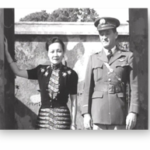
Most pilots were paid $600 per month—roughly three times what they were earning in the U.S. Army Air Forces. In 2010 dollars, $600 would be $8,883 per month or $106,595 on an annual basis. In addition, for every aircraft destroyed in air or on the ground, the pilots would be paid a bonus of $500 ($7,400 in today’s money). Ground crew men were paid half as much as pilots.
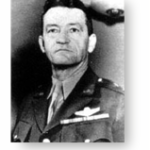
When pilots arrived in China, Chennault told them to ignore everything they had learned about air combat. Like all U.S. pilots, they had been trained in World War I dog fighting. The Japanese aircraft were far superior at that. So Chennault trained his pilots to fly above their targets, use their superior speed and dense machine gun fire to dive through in a slashing attack, and then climb back for another run. He trained them intensively to fight this way.
End of The Tigers
Despite its fame, the American Volunteer Group was only active from December 20, 1941, to July 4, 1942. Within weeks the war began, the United States Army and Navy began efforts to absorb the AVG and return its pilots and ground crews to active duty. However, Army and Navy recruiters used heavy-handed tactics and insisted that the sick and war-weary and ill pilots continue without a rest. Only a few AVG pilots signed up, although most soon took jobs in the armed forces or associated organizations. The few pilots who did sign up formed the nucleus of the new 23d Fighter Group, which carried on the name Flying Tigers. The new tigers were part of Chennault’s new 14th Air Force.
Claire Chennault was made a brigadier general on April 22, 1942. Jimmy Doolittle was made a brigadier on April 19—immediately his raid on Japan. In Chunking, which was the capital of China, General Bissell gave Doolittle two collar stars. When Doolittle passed through Kunming on his way back to the United States, he met Chennault. Doolittle realized that Chennault did not have his stars yet. He removed one of his own and gave it to Chennault.
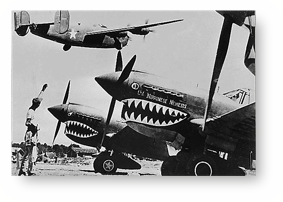
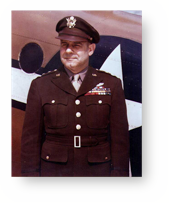
Misconceptions of the AVG
With the Flying Tigers, it is difficult to separate fact from the enormous amount of fiction generated around the AVG. For instance, many people get their view of the AVG from the John Wayne movie Flying Tigers. However, the movie portrayed the AVG pilots as being a motley group of former transport pilots. In fact, except for a few who lied to get in, the AVG pilots were trained fighter pilots. In addition, the movie ends with the AVG pilots learning that the war had begun. As we saw earlier, the Flying Tigers did not have their first engagement until two weeks after Pearl Harbor.
The Flying Tigers are forever associated with China. During the critical first weeks of the war, however, they did almost all of their fighting in Burma. As noted earlier, the Tigers’ headquarters was Kunming, which was the end of the 700-mile Burma Road that began in Lashio, Burma. The British moved goods to Lashio by rail from the southern port of Rangoon. Shortly after the beginning of the war, the Japanese began to attack Burma. They took Rangoon and then pushed north. The Flying Tigers had three squadrons of about 18 aircraft each at the best of times. Chennault rotated the squadrons one at a time into the Burma fighting. The Flying Tigers decimated Japanese air raids but could do nothing more than help slow the advance.
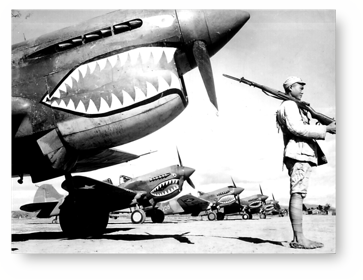
There also is confusion about the Japanese aircraft the AVG fought in Burma and China. Although most people realize that many Flying Tiger victories were against Japanese bombers, they often assume that the fighters the AVG faced were the Mitsubishi A6M Zeros of the Imperial Japanese Navy. However, all Zeros had been withdrawn from China by the time the war started. The most common fighter the Flying Tigers faced was the Japanese Army Air Force Ki-27 Nate. The Nate was a half a generation behind the P-40 and the Zero. It had non-retractable wheels. Although it was supremely maneuverable, it only had two rifle-caliber machine guns and was much slower than the P-40s of the AVG.
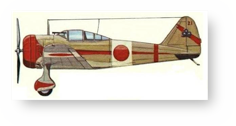
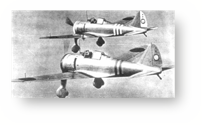
When the Ki-27s proved far inferior to the AVG’s P-40s, the Japanese deployed their new Ki-43 Hayabusa, which Americans codenamed Oscar. The Ki-43 was very similar to the Zero. It was about as fast as the Zero (and therefore still slower than the P-40), and about as maneuverable. Like the Zero and the Nate, the Oscar had two rifle-caliber machine guns. However, the Oscar lacked the Zero’s two
additional cannon.
Even the original Flying Tiger P-40B aircraft were faster than the Nate and Hayabusa, and the P-40Bs had pilot armor and two heavy caliber machine guns plus four rifle-caliber machine guns. Later, the AVG was reequipped with P-40Es that were faster and had six heavy caliber machine guns. However, MacArthur had P-40Es at the beginning of the war and did poorly against Japanese fighters. The AVG was successful largely because of Chennault’s air combat tactics, which eventually became U.S. fighter doctrine.
There is also confusion about the number of Flying Tigers kills. AVG pilots claimed 296 Japanese aircraft destroyed in the air and on the ground. Although the actual number destroyed was probably overstated [Ford, 2007], the Tigers made the Japanese pay a very high price for Burma. However, they never had more than about 50 available aircraft and usually had many fewer. This was tiny compared to the Japanese air armada facing them. Even with their very high kill ratio, the Flying Tigers could only fight a delaying war. In addition, the Flying Tigers pilots paid a high price. Nearly a quarter were killed, captured, or missing in action.
Although there is a great deal of myth surrounding the Flying Tigers, there is one thing that we know about them for certain. The Flying Tigers were the heroes that America needed when America never needed heroes more.
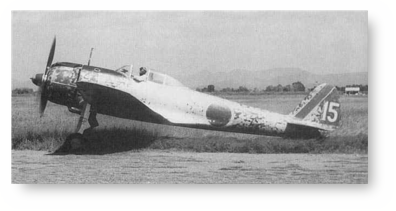
Our P-40E (Kittyhawk)
At the beginning of the war, the P-40 Warhawk was the USAAF’s main fighter. The first significant model was the P-40B, which had two big 50-caliber machine guns in the nose and two small 30-caliber machine guns in each wing. This was the model that Welch and Taylor flew at Pearl Harbor. It was also the first model flown by the Flying Tigers. The British and Canadians called it the Tomahawk.
The more powerful and faster P-40E was just coming into service at the beginning of the war. These aircraft had three 50-caliber machine guns in each wing. MacArthur had P-40Es in the Philippines, although these were quickly destroyed. The Flying Tigers upgraded to the P-40E, which the British and Canadians
called the Kittyhawk.
After the war, the Allies destroyed most of their P-40 Warhawks. Fortunately, Fred Dyson purchased large a number of British and Canadian Kittyhawks and moved them to Seattle. It is thanks to his foresight that many U.S. museums have P-40s Warhawks to display. Our aircraft is one of Dyson’s Kittyhawks. It was delivered to the Royal Canadian Air Force (RCAF) in April 1942, which was about the same time the Flying Tigers got their P-40Es. After the Kittyhawk was rescued by Dyson, it was sold multiple times. The Flying Tiger Line and Tiger International inc. purchased the aircraft in the early 1980s, painted it in the colors of the Flying Tigers, and loaned it to the San Diego Air and Space Museum. FedEx inherited the aircraft when it purchased the Flying Tiger Airlines in 1989. Recently, FedEx decided to loan the airplane to Pacific Aviation Museum in
Pearl Harbor, Hawaii.
